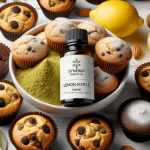| Outline for The Environmental Impact of Sustainable Herb Farming in Australia latest news |
|---|
|
**Introduction** |
The Environmental Impact of Sustainable Herb Farming in Australia latest news is a topic sparking widespread interest in 2025, weaving together themes of environmental stewardship, economic opportunity, and the growing consciousness of consumers about the food on their plates. With Australia’s landscapes facing the brunt of climate shifts, the rise in eco-friendly herb cultivation is more than a trend—it’s emerging as a necessity. Farmers, policymakers, and communities are waking up to the reality that how we grow herbs today will define the resilience of our ecosystems tomorrow. If you’ve ever wondered how something as simple as basil or rosemary could influence the environment, this piece will guide you through powerful insights and the latest developments from the fields of Australia.
The Environmental Impact of Sustainable Herb Farming in Australia latest news
Recent reports highlight that sustainable herb farming in Australia is not just reducing environmental footprints but actively enhancing soil vitality and biodiversity. The latest news points to government-backed grants, community-supported agriculture models, and cutting-edge irrigation technologies being rolled out across key herb-growing regions. Interestingly, while some critics question the scalability of these techniques, results from trial farms have been overwhelmingly positive. Carbon audits now show a reduction of emissions by up to 30% compared to conventional herb production, signalling a brighter horizon for growers and consumers alike.
Why Sustainable Herb Farming Matters in 2025
Herbs may be small in size, but their environmental footprint can be surprisingly large when grown under intensive, chemical-reliant systems. In 2025, with climate change impacts accelerating, sustainable farming practices offer a proven pathway to preserving ecosystems while ensuring high-quality, aromatic yields. Farmers have discovered that nurturing the soil, reducing chemical inputs, and promoting biodiversity not only protect the planet but also secure more loyal customers in an increasingly eco-conscious marketplace.
Australia’s Unique Climate and Its Role in Herb Cultivation
Australia’s climate is as varied as it is challenging—from arid interiors to tropical coasts. This diversity offers unique opportunities for cultivating a wide range of herbs, but also presents risks like drought and extreme heatwaves. Sustainable practices, such as strategic mulching and shade-net use, mitigate these risks, allowing farmers to adapt to unpredictable conditions while maintaining steady yields. It’s a delicate dance between climate realities and agricultural ambition.
The Shift from Conventional to Sustainable Farming Practices
Over the past five years, a quiet revolution has been taking place in rural fields. More herb farmers are swapping synthetic fertilisers and pesticides for organic compost, beneficial insects, and natural pest repellents. While the transition period can be financially and technically demanding, the payoff is evident—boosted soil health, reduced water contamination, and resilient plant varieties that can face climate stress head-on.
Key Sustainable Farming Techniques for Herbs
- Drip irrigation to save water and reduce evaporation
- Composting to boost soil organic matter
- Intercropping herbs with beneficial insect-attracting flowers
- Solar-powered greenhouse systems
- Seasonal crop rotation to prevent pest build-up
These methods, though simple in principle, have delivered transformative results in herb-growing communities from Western Australia to Tasmania.
How Indigenous Knowledge Enhances Sustainability
Australia’s First Nations communities have celebrated a deep connection to land for thousands of years. By integrating Indigenous land management techniques—such as seasonal planting based on local environmental cues—modern herb farmers are finding not just higher yields, but a better balance with nature. This knowledge transfer bridges cultural heritage and contemporary agriculture.
The Role of Crop Rotation and Soil Health in Herb Farming
It might sound old-fashioned, but rotating crops is a cornerstone of sustainable herb farming. Growing basil after legumes, for example, enriches nitrogen levels in the soil naturally. Healthy soil teeming with microorganisms needs less chemical input and repels diseases more effectively, leading to both environmental and financial gains.
Reduced Carbon Emissions Through Sustainable Farming
One of the standout achievements captured in the latest news is the significant drop in greenhouse gas emissions from farms embracing sustainability. By cutting out synthetic nitrogen fertilisers alone, emissions are slashed, as their production and application are major CO₂ culprits.
Water Conservation Strategies in Herb Production
Water scarcity is a persistent challenge in Australia. Farmers are now turning to advanced systems like drip lines, moisture sensors, and rainwater harvesting to make every drop count. In regions like Queensland, these methods have reduced water use by 40% without compromising yield or flavour quality.
Nutrient Management and Organic Inputs
The days of blanket chemical application are fading. Instead, precision nutrient management—backed by soil testing and organic amendments—is ensuring herbs get exactly what they need without damaging the ecosystem around them.
Government Support and Policy Initiatives
The Australian government has stepped up with subsidies and training programs tailored to sustainable farming. Grants for solar-powered irrigation and organic certification are now easier to access, providing tangible incentives for farmers shifting to greener methods.
Economic Opportunities for Australian Herb Farmers
Sustainability pays—literally. Export markets are keen on traceable, chemical-free produce, and local farm-to-table movements reward growers who can tell a compelling environmental story behind their herbs.
Consumer Demand for Eco-Friendly Herb Products
Today’s shoppers aren’t just buying flavours—they’re buying values. Labels that signal sustainability, such as ‘grown using regenerative practices’, are finding prime shelf space in major supermarkets.
Biodiversity Benefits of Sustainable Herb Farming
Planting herbs alongside native shrubs and wildflowers promotes pollinator health and attracts beneficial predators like ladybirds, creating a thriving, balanced ecosystem within the farm boundaries.
The Role of Technology and Innovation
From drone monitoring of crop health to AI-driven irrigation scheduling, technology is the silent partner in the sustainability success story. These tools optimise resource use, reduce waste, and improve profitability.
Challenges and Contradictions Facing the Industry
Despite the optimism, not everything is rosy. Smaller farms often struggle with initial investment costs, and some critics question whether organic practices can meet large-scale market demands without a yield penalty.
International Market Potential for Australian Sustainable Herbs
Asia and Europe are particularly receptive to sustainably grown herbs from Australia, thanks to the country’s reputation for clean, green produce. With proper marketing, these exports can command premium prices.
Collaborations Between Farmers, Researchers, and Policymakers
Partnerships have been key to innovation—sharing research insights, trial results, and best practices has sped up adoption rates of sustainable approaches.
Case Studies of Successful Sustainable Herb Farms
From a family-run basil farm in Victoria to a rosemary and thyme enterprise in South Australia, these case studies reveal how innovation, persistence, and eco-consciousness turn sustainability into a competitive advantage.
Sustainable Herb Farming and Climate Change Mitigation
Sustainable methods not only adapt to climate change—they actively fight it. By enhancing carbon sequestration in soil and minimising emissions, these farms contribute directly to Australia’s climate goals.
The Future Outlook for 2030 and Beyond
If current trends hold, the herb industry in Australia could become a flagship example of green farming by 2030, setting standards for other horticultural sectors worldwide.
Practical Tips for Starting a Sustainable Herb Farm in Australia
New entrants can start small—optimising land use, choosing hardy herb varieties, and tapping into local sustainable farming networks for support and education.
Educating the Next Generation of Herb Farmers
Schools, universities, and agricultural colleges are expanding programs on regenerative agriculture, ensuring the sustainability ethos embeds in future industry leaders.
FAQs on Sustainable Herb Farming
What herbs grow best in Australia using sustainable methods? Many thrive, including basil, rosemary, thyme, and native species like lemon myrtle.
Does sustainable herb farming require more labour? Initially, yes, but efficiency improves with experience and technology use.
How much water can be saved with drip irrigation for herbs? Reports show savings of up to 40% compared to traditional watering methods.
Are government grants available for sustainable herb farming? Yes, several programs exist for irrigation upgrades, organic certification, and renewable energy adoption.
Is organic certification necessary for sustainable farming? Not always, but it can help in marketing and export eligibility.
Can small-scale farmers compete in the sustainable herb market? Absolutely—niche markets and direct sales can offer strong returns.
Conclusion
Sustainable herb farming in Australia is more than an agricultural trend; it’s a blueprint for the future. The latest news underscores how environmental responsibility, economic viability, and community engagement can co-exist. While challenges remain, the momentum is undeniable. Whether you’re a farmer, a policymaker, or a conscious consumer, supporting and celebrating sustainable herb production today helps sow the seeds of a flourishing tomorrow.

